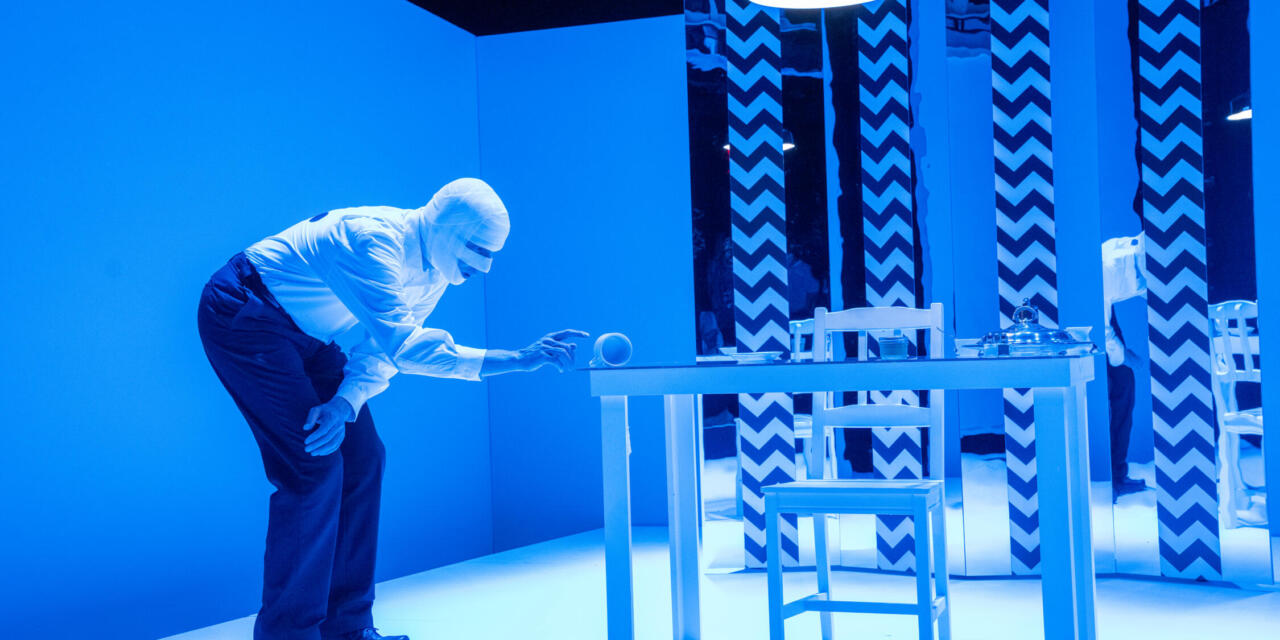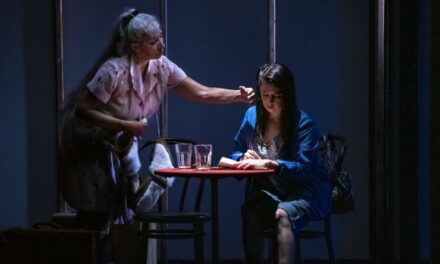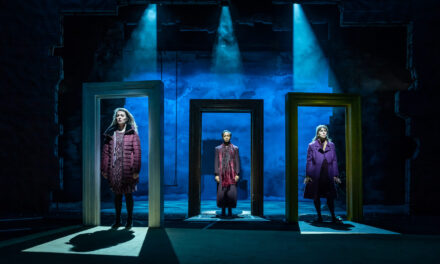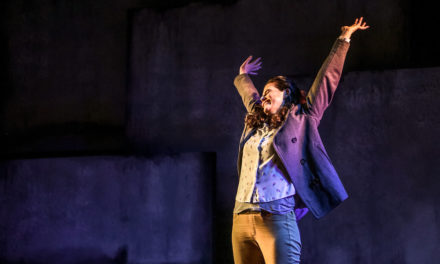The show Lazarus 1972-2022 is difficult to pin down. How can what a thought looks like be described? It’s this sort of impediment that does not allow for easy categorization.
The show is being performed at the Downstairs Theatre at La MaMa, which takes the audience down a turning flight of stairs, through a foyer and another large empty room then finally into the space for the show. The theatre itself is divided from the audience, even further by the use of a massive partition. Simply finding a seat feels like descending into the subconscious mind.
Lazarus, in its original incarnation, was first performed in 1972, before the original Twin Towers at the World Trade Center were completed, before CBGB existed, in the same year of the Watergate burglary, and the release of The Godfather. The 1972 show had a budget of $100 and was held in a SoHo loft.
In the 2022 revisitation of the original, a slowly moving cosmos is projected onto the partition; evoking the infinite – the vastness of space – the unknowability of the universe where time doesn’t exist. Fittingly, the next step on the journey is to travel back through time from 2022 to 1972 when Lazarus was first performed. Flashes of New York City through the last 50 years are projected onto the screen and eventually, a section of the partition slides away to reveal the timeless world of Lazarus.
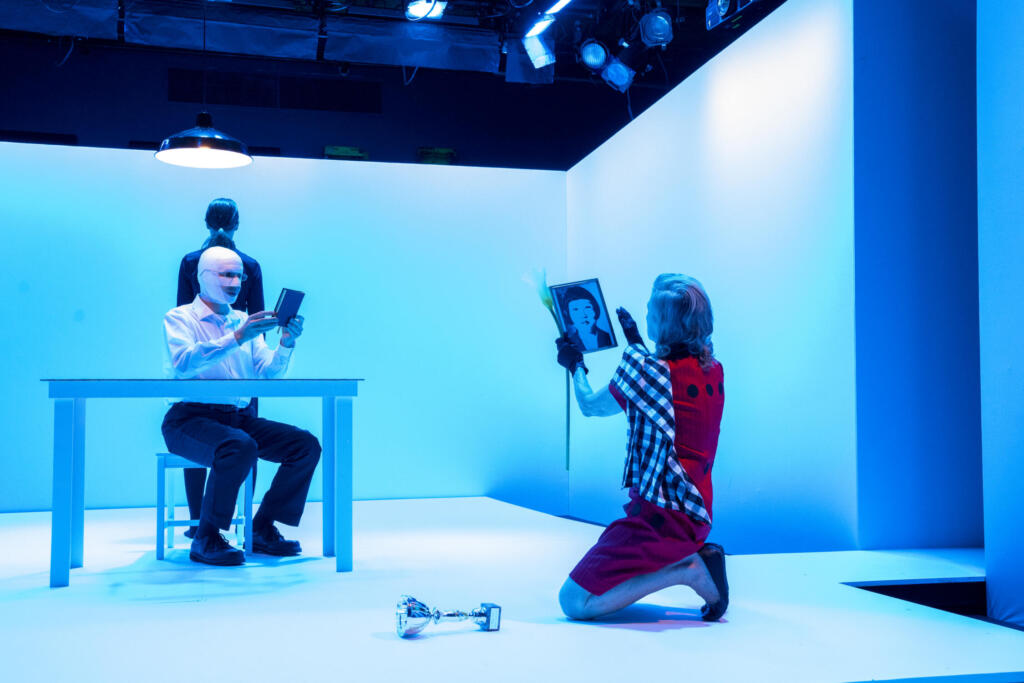
Jeannie Hutchins as Woman. Photo by Richard Termine.
The first spoken words are a voice-over huskily declaiming, “There is a room – with nothing in it.” And then the room is quickly and deliberately filled by stagehands with a table, a chair, a place-setting, coffee, and cream. All are dragged or carried and then set down with a clunk-plonk-sounding motion. Lazarus enters, a human dressed normally enough in black pants and a white shirt, but whose head is bandaged so only eyes and mouth can be seen. And so, the journey begins. We see the struggle that Lazarus has with determining his place on this planet, how he lives in an underworld at times beneath the sidewalk grates of the city. A mourner elicits the five stages of grief as Lazarus tried to connect and fails. Light, shadow, and sound confound Lazarus with fluttering wings, music, and total darkness.
Can a production with puppets be profound? Near the end of the show, a replica of Lazarus puppet becomes a stand-in for the human Lazarus on the last bits of his journey. The delicate artistry of the puppeteers was breathtaking. The three stagehands operating the puppet somehow rendered themselves invisible (not literally) creating the illusion of life in a puppet 24 or so inches tall.
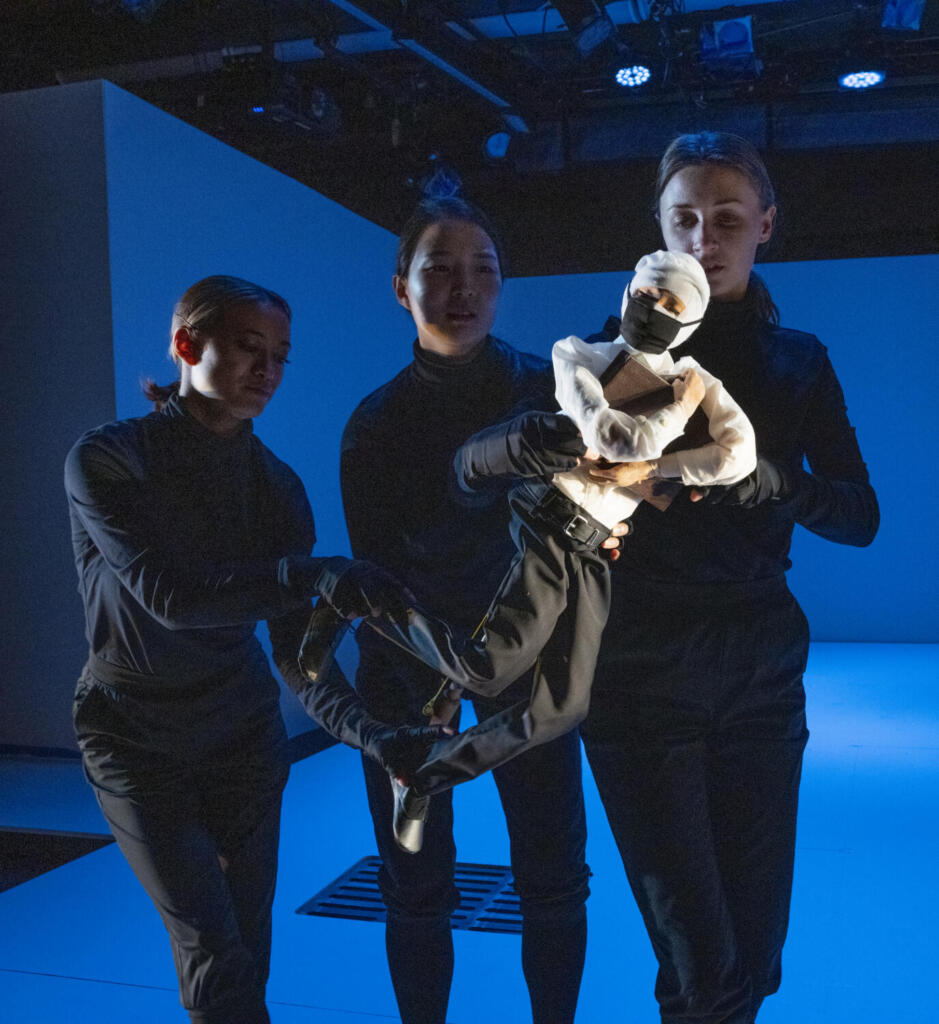
Photo by Richard Termine.
The brevity of Lazarus 1972-2022 (running time of 60 minutes) led to one of the more unusual situations in theatre. When it was over, the audience didn’t rush out of their seats, but just sat in pregnant silence filled with questions, with a myriad of reactions. This is fitting: no two subconscious minds resemble each other. The profundity of Lazarus 1972-2022 must be determined by the subjectivity of each viewer.
Lazarus 1972-2022 ran through Oct 16, 2022 at LaMaMa The Downstairs Theatre. Written by Ping Chong, Artistic Director of the eponymously named company, the show served as the final production before Chong steps away. The cast included Christopher Caines as Lazarus; Jeannie Hutchins as Woman; Chaesong Kim, Nancy McArthur, and Tiffany Tan as Figures 1, 2, and 3. Voiceovers were by Louise Smith and Ping Chong.
This post was written by the author in their personal capacity.The opinions expressed in this article are the author’s own and do not reflect the view of The Theatre Times, their staff or collaborators.
This post was written by Clare Cioffero.
The views expressed here belong to the author and do not necessarily reflect our views and opinions.

